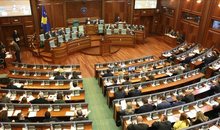
 Flash News
Flash News
Study / Climate change tripled the number of deaths from the recent heat wave in Europe
Details from the murder of Renis Dobra, it is suspected that the perpetrators ambushed the 23-year-old's car with weapons
Scandal at Belgrade airport/ Bus with Albanians blocked by police, then locked on plane
Accident in Kosovo, 1 victim and 4 injured reported
The appeal of the GJKKO upholds the prison sentence for Gjergj Cukali
Women are not giving birth, Fertility Index falls to 1.21 children per woman in 2022, third lowest in Europe
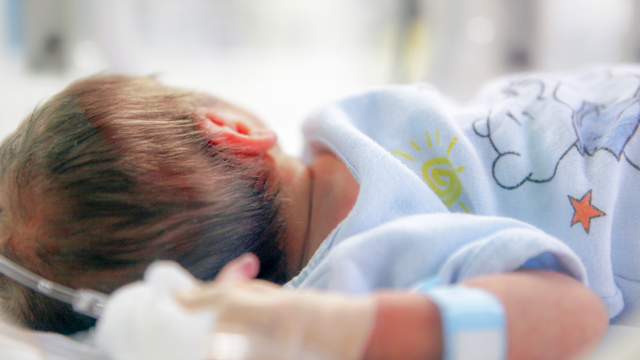
Year after year, women of reproductive age plan to give birth to fewer and fewer children. Postponing the age of marriage, career and lifestyle changes are making Albanian women less and less inclined to start a family and to give birth to more than one child.
INSTAT data shows that during 2022 the fertility rate fell to 1.21 children per woman of reproductive age, from 1.32 in 2021. This is the sharpest decline since 2015 (see graph below).
This means that in 100 women of reproductive age, only 121 children are born, out of 132 children born in 2021. From 2001 to 2023, the fertility rate has halved, falling from a level of 2.31 children per woman to 1.21 children.
Compared to Eurostat 2021 data, Albania is seen to have the lowest birth rates in Europe, leaving behind only Spain (1.19) and Malta (1.13).
The fertility index is below the replacement rate of 2.1 children per woman, which means that a couple cannot replace themselves.
Postponing the age of marriage, career goals and in many cases economic impossibility are causing Albanian women to give birth to fewer and fewer children.
According to internal data from INSTAT, the synthetic fertility index fell to 1.32 children per woman in 2021 from 1.34 children in 2020 and 1.36 in 2019. In 2001, according to INSTAT, this indicator was 2.1, while in the 1970s it was over 5.
Fertility falls at younger ages, increases for older age groups
INSTAT reported that in 2022 the birth rate has decreased for the 20-24 and 25-29, 35-39 age groups, while for the older age groups it has undergone a slight increase. In 2022, the average age at birth is 29.5 years.
Last year, 24,688 babies were born with a 13 percent decrease compared to 2021. The sex ratio at birth is 107, which shows that for every 100 girls born, 107 boys are born.
This ratio is higher than the natural ratio, which is 105.
Koeficientet specifikë të lindshmërisë sipas gjinisë për 2022, mbështesin faktin se burrat e fillojnë aktivitetin e të pasurit fëmijë relativisht më vonë se gratë, afërsisht një 5 vjeçar më vonë, ndërkohë që normat e lindshmërisë pas të 30-ave ë kanë më të larta se gratë.
Koeficienti bruto ë riprodhimit (KBR) është një tregues ë mirë për matjen e rritjes së brezave të ardhshëm. Ai mat normën me të cilën gratë zëvendësojnë veten e tyre gjatë viteve të jetës riprodhuese. Mënyra e llogaritjes së KBR-së është e njëjtë me atë të ISF-së, por në këtë rast merren parasysh vetëm lindjet gra.
Në vitin 2022, KBR-ja është 0,59 që do të thotë se gratë në Shqipëri janë rreth 41 për qind larg zëvendësimit të vetvetes. Ky tregues ndikohet direkt nga sjellja riprodhuese e grave e shprehur nga ISF-ja dhe nga raporti gjinor në lindje.
The teenage birth rate has decreased compared to a year ago. In 2022, there are 10.0 births for every 1,000 girls in the 15-19 age group, up from 12.1 births in 2021.
With this progress, the population of Albania will suffer an irreversible decline, as there will be fewer and fewer women, who are the basis of reproduction.
In 2021, the KBR is 0.63, which means that women in Albania are about 37 percent away from replacing themselves. This indicator is directly influenced by the reproductive behavior of women and by the preference to give birth to boys. Monitor
Latest news


Trump and Israeli commander warn: Gaza ceasefire could be near
2025-07-09 22:13:21
Fire in Elbasan Landfill, pedagogue: It is a cancer and environmental crime
2025-07-09 21:54:47

Dangerous summer, number of snake bites increases
2025-07-09 21:22:13
Berisha appeals again: Stop state terror against the residents of Theth!
2025-07-09 21:15:36
'Kissing disease' virus linked to several forms of cancer
2025-07-09 21:04:44
Malltezi confesses after release: Justice has become a political weapon
2025-07-09 20:51:48
Vokshi: Albania's EU integration has stalled due to lack of free elections
2025-07-09 20:37:21


Head of the Police Supervision Agency, Florian Sulejmani, resigns
2025-07-09 19:58:03

Trump returns to tariffs, as Europe seeks trade dialogue
2025-07-09 19:45:49

Moral Dilemma: Hooking Up with Your Friend's Ex? Psychology Provides the Answer
2025-07-09 19:26:41
Theth, Shehaj: A strategic investor will emerge
2025-07-09 19:11:46

Albanian expert warns: NATO must wake up, war with 'light' is coming
2025-07-09 18:47:04

Ancelotti sentenced to one year in prison in Spain for charges
2025-07-09 18:24:44

Osmani visits Washington, meets with the acting Assistant Secretary of State
2025-07-09 18:03:26
EU report, Nesho: Europe is fed up with propaganda
2025-07-09 17:50:34
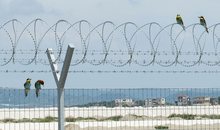
EP urges Albania to halt controversial projects damaging the environment
2025-07-09 17:26:18
Self-talk, the secret that helps us calm our minds
2025-07-09 17:19:55
Our Prime Minister's 1000th day!
2025-07-09 17:11:24
Accident in Kosovo, 1 victim and 4 injured reported
2025-07-09 17:01:27

European Court finds Russia guilty of violations in Ukraine
2025-07-09 16:45:35

The appeal of the GJKKO upholds the prison sentence for Gjergj Cukali
2025-07-09 16:09:42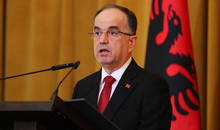

For a perfect tan, you should eat these foods
2025-07-09 15:55:05
A little light, oh prince...
2025-07-09 15:46:08
Can you protect Velina by serving Edi Rama?
2025-07-09 15:37:51
Bosnian court lifts detention order for Republika Srpska leaders
2025-07-09 15:23:01

Milk production follows the decline of livestock farming
2025-07-09 14:59:38
Man arrested after setting fire to aunt's apartment
2025-07-09 14:54:17

3 in 4 people who go to parties regularly will remain single for life
2025-07-09 14:29:47
Trump threatens to bomb Moscow if it attacks Ukraine
2025-07-09 14:28:40
Clashes in Montenegro after prestigious award given to Montenegrin nation-denier
2025-07-09 14:15:48
Tirana/ 59-year-old man falls from the second floor of his apartment
2025-07-09 14:05:28






Edi Rama's summer Delirium
2025-07-09 13:05:42
Wanted by Italy, drug trafficker arrested in Durrës (NAME)
2025-07-09 12:50:13
European Parliament adopts report on Albania
2025-07-09 12:44:25
NAME/ Elderly man found dead in Devoll River, investigation leads
2025-07-09 12:24:47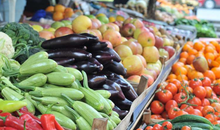
Taxes warn of on-site inspection for invoice sales of agricultural products
2025-07-09 12:20:59
Climate change tripled heat-related deaths in Europe
2025-07-09 12:10:28
From the ground to paper, Rama announces new reform for "untouched lands"
2025-07-09 11:58:17
The 44th attempt to create a new Assembly for Kosovo also fails
2025-07-09 11:45:22

The head of the Rinas police station is reconfirmed in office
2025-07-09 11:25:03


Found dead in Shkopet Lake, 23-year-old has injuries to his throat
2025-07-09 10:41:39


Hoxha: We will have a parliament that will surpass any comedy program!
2025-07-09 10:10:32

Directors targeted! After Fier and Durrës, Rama arrives in Elbasan
2025-07-09 09:53:57
Name/Identification of the 23-year-old found dead near Shkopet Lake
2025-07-09 09:42:34
IKM action in Theth, residents come out in protest
2025-07-09 09:34:54
Reasons why the EU has not imposed new sanctions against Russia
2025-07-09 09:18:35
DW: Online scams increase human trafficking
2025-07-09 09:01:29

Reported missing by his father, 23-year-old found dead near Shkopet lake
2025-07-09 08:42:13
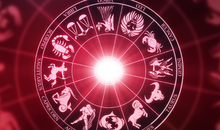
Horoscope, what do the stars have in store for you today?
2025-07-09 08:25:44
Sun and rain, Wednesday with unstable weather
2025-07-09 08:06:58
Posta e mëngjesit/ Me 2 rreshta: Çfarë pati rëndësi dje në Shqipëri
2025-07-09 07:52:02

Tabaku: Salianji bore a political cost that no one in Albania has borne
2025-07-08 22:36:15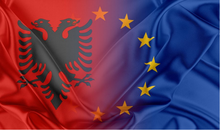


Sekretet për të shijuar verën si një ‘profesionist’
2025-07-08 21:45:06


Albania's Waste Crisis: Toxic Smoke and Deep Governance Problems
2025-07-08 21:13:07
Alarming pollution in Fushë-Arrëz, copper factory waste turns the Fan River red
2025-07-08 21:07:14

Poll/ How do you assess the Prime Minister's intervention in local government?
2025-07-08 20:40:01
28 arrested in Italy and Spain for drug trafficking, including an Albanian
2025-07-08 20:24:14
Residents clash with police in Theth: We are on our land
2025-07-08 20:11:41
Death of 27-year-old in Lipjan, Osmani: To be investigated independently!
2025-07-08 20:06:52
Trump promises US will send more weapons to Ukraine
2025-07-08 19:54:25

EU targets health, education, police and cadastre as areas of corruption
2025-07-08 19:23:34